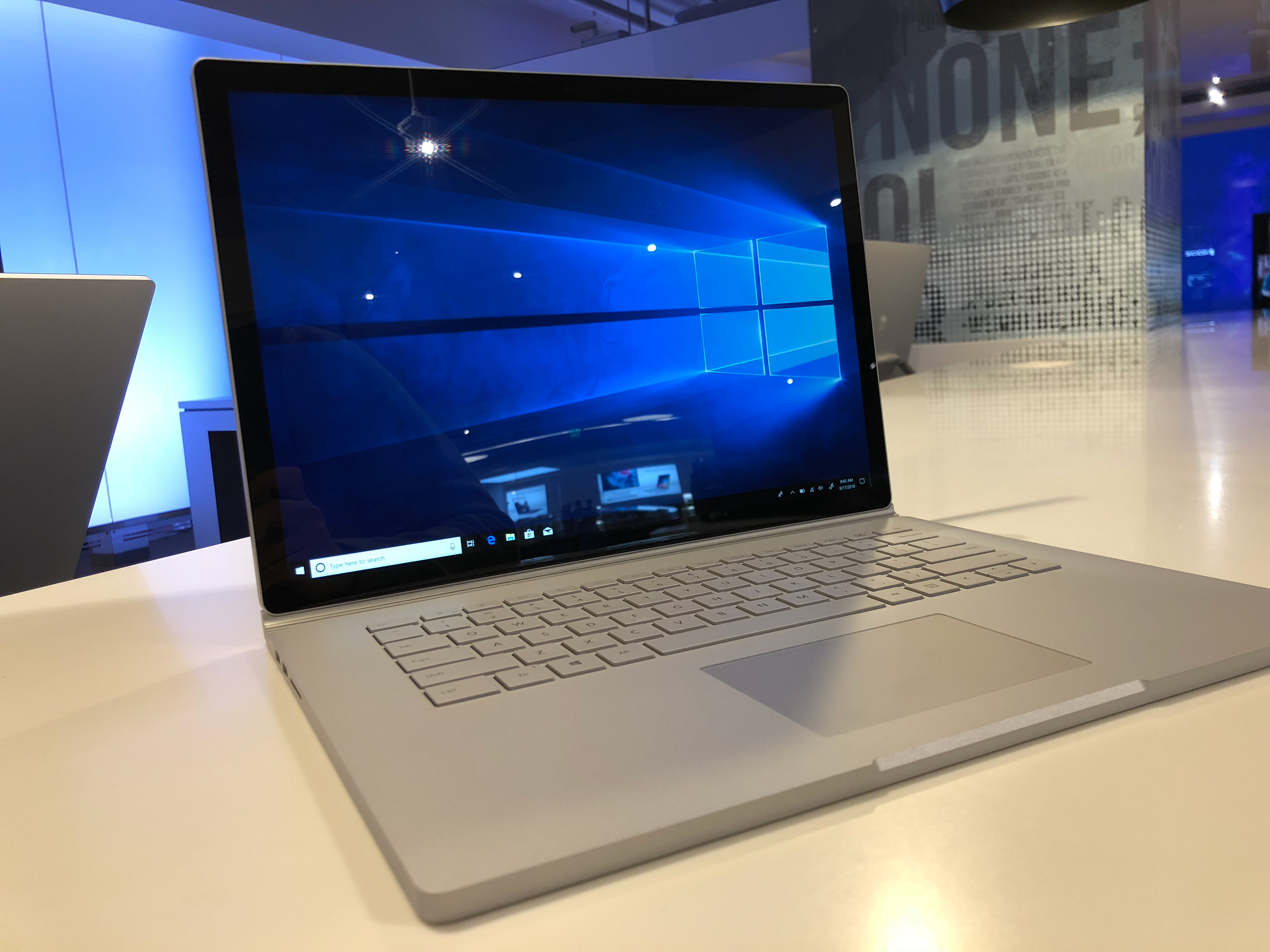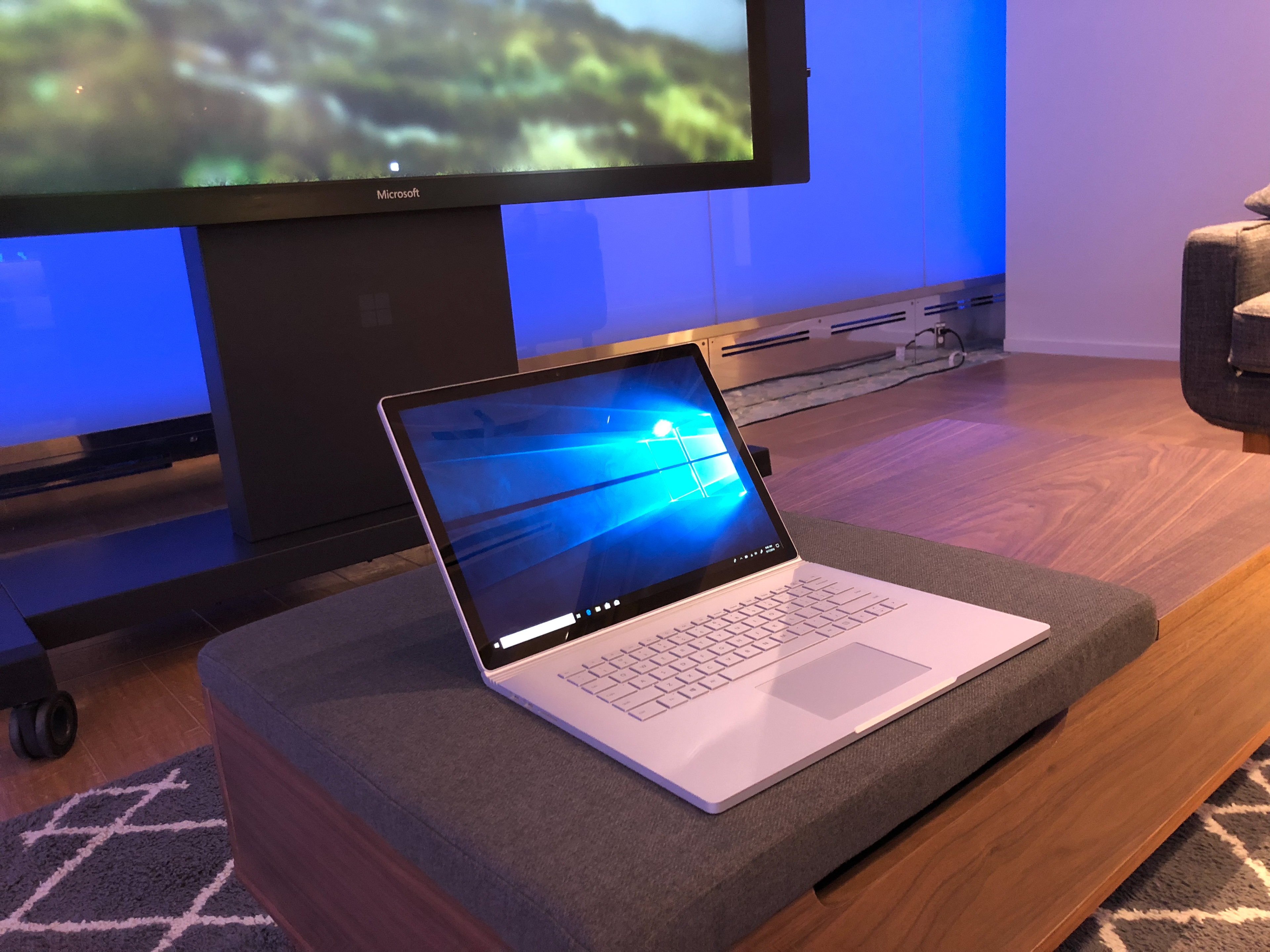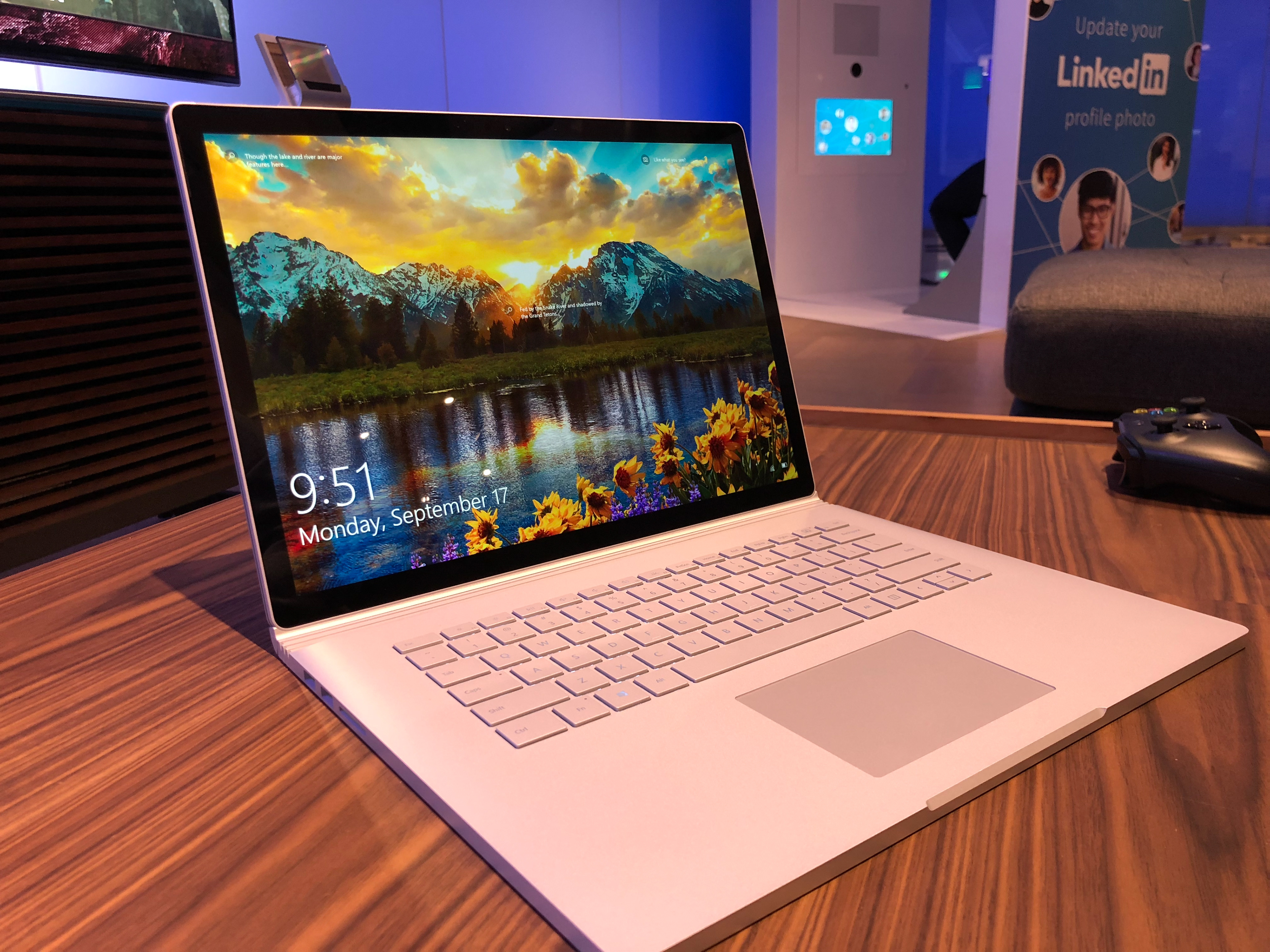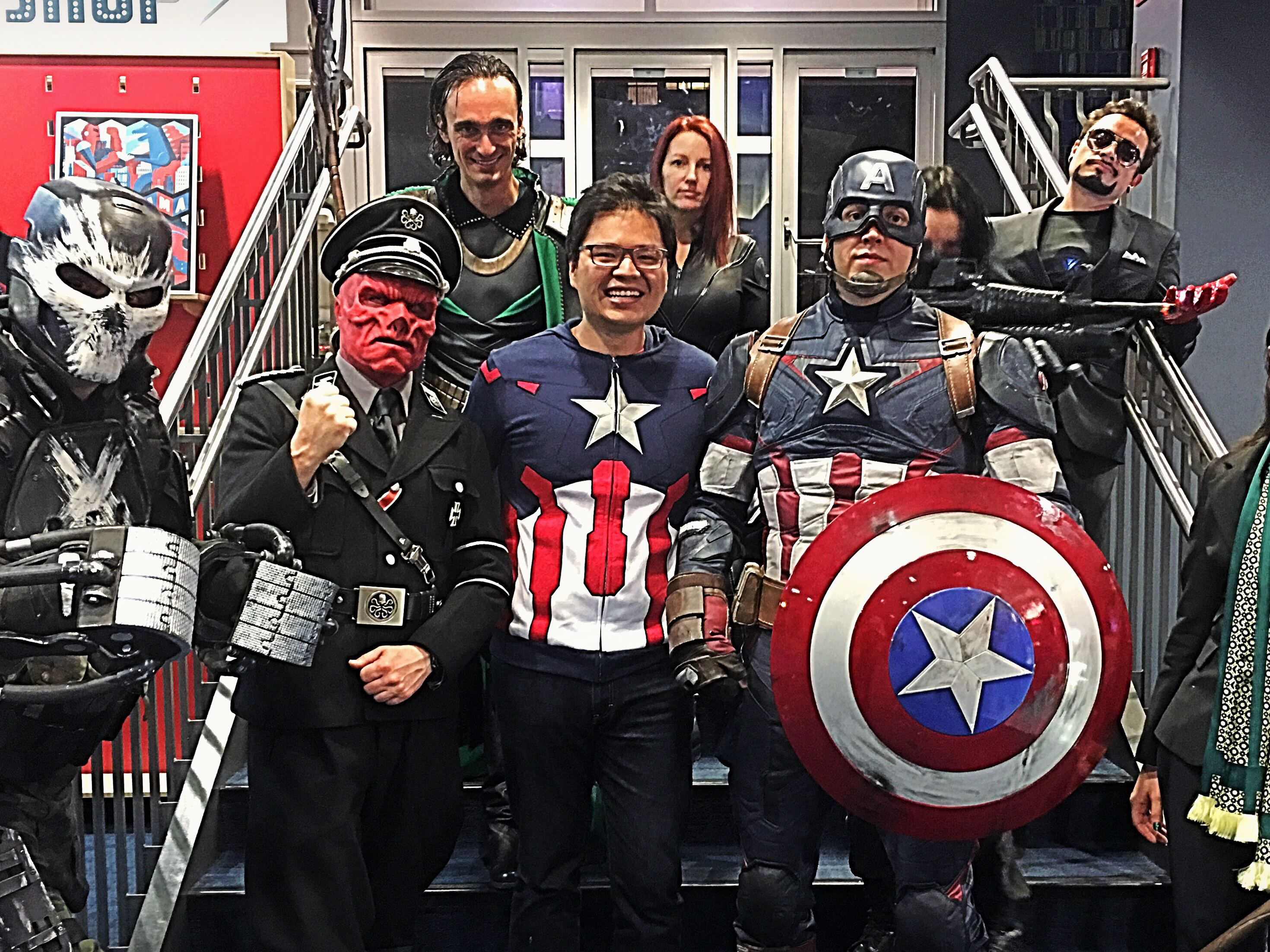Welcome to the Flagship - The performance powerhouse.
The productivity monster - for professionals, creators, and die hard surface enthusiasts - the convertible : the proof of concept - the laptop that will replace your laptop- the 2:1 - The Microsoft Surface Book 2.
For the past year - this machine has been the device, the end all be all for my professional, productivity, and entertainment needs. This is top of the line - equipped with a 1TB SSD, with 8th Gen Intel® Core™ i7-8650U quad-core processor, 4.2GHz Max Turbo, 15" pixelsense display with 3240 by 2160 resolution, 17+ hour battery life and GTX 1060. All encased in a laser cut slate with magnesium alloy finish. This is as souped up as you get, at nearly $3K. It’s the best - Well at least for the next couple months.
Top of the Line. No comporomises
This review is for the 15", Core i7, 16GB 1TB, GTX 1060 - top of the line, nearly $3K.
So how does it really stack up after nearly a year of use? Can you really detach the top 'clipboard' and make it a daily driver - and how does that compare to an iPad Pro? And has Microsoft made a category killer proof of concept? Let's dive in, with one year later - the Surface Book 2.
Overall Design
Clean, sleek, cool to touch, smooth magnesium ally finish, silver - how much more to describe something that you'd be terrified to scratch or drop? It's alien - and pay attention to the lack of rubber feet on the device, the keyboard clamshell doesn't need any rubber protection and the indentation on the keys, seen on the Surface Book with performance base - is gone. There must be some special lining on the screen to keep the base from rubbing and wearing out the top of the screen. Something definitely patented.
Overall look and feel -
The Surface Book 2 streamlined, and masterfully crafted, there aren't even any dang stickers on the palm rest. The Magnesium alloy finish. As it if were carved from straight from a metal slab, laser etched with precise cutouts. Sound familiar? It's a Macbook with Windows. Except it's not running parrallels. Except it aspires to be so much more.
The Display
The Display - Beautiful, stunning with accurate colors - sRGB certified with the option for enhanced, what you see is what you get. The IPS panel is near flawless - with no distracting backlight or edge bleed, no creakiness or cheap plastic feel as you grasp it to lift the cover up, this is the premier display we've come to expect from the Surface line. Those of you might ask for 4K - but as of now you'll run into problems with legacy windows apps appearing too small, although the most recent creators update aims to selectively increase windows display sizes, and it's not a problem with this screen. The only critique here is that the bezel seems to have reached it's limit in how thin it can get - mainly due to the pen digitizer that the Surface team crammed in, oh and did I mention it's only 15mm thick? On the 15" the bezel is near invisible being swamped with the screen real estate - but for future products like the Surface Go - it looks massive. Maybe for next generations.
You'll appreciate the real estate - especially running excel, Adobe Suite, watching YouTube Netflix, or gaming. Bigger is better here.
Trackpad and Keyboard
The Trackpad -
The Surface book and the entire Surface Family has spoiled us - in short it's great.
You remember bad trackpads. You don't think about good ones. Remember horrendous other Windows OEM manufacturers used to make trackpads? Pepperidge Farm remembers. It supports two and three finger gestures, - well enough. Clicking down is full, and the glass is smooth without catching oily fingerprints.
The Keyboard
There is a clear and almost hefty bounce to the keys. Perfect for marathon essays or running code. Obviously Not your clicky 'green or blue switches' from gaming mechanical keyboards but the best that membrane keys have to offer. It's very distinct on this keyboard when you make a keyboard press, raised a touch too high for my preference but for you power typists out there you'll be very satisfied. A notebook this massive doesn't have to innovate on thinness or butterfly patents. And a speck of dust won't brick your entire device getting under the keys.
All About the Base.
No Trouble
Let's talk about the base - the "one more thing" about the Surface Book 2. For all it's messaging as a workhorse, flagship, everyday powerhouse 'clamshell' laptop - it simply isn't. In truth it's an overpowered 15in slate, tablet if you will, attached to base like none you've ever seen. Anyone with a Lenovo or Targus USB 3.0 dock will understand. Oh and this base can house a GTX 1060. So it's a Razer Core as well.
The team has done a tremendous job baking in the inputs, USB 3.0, proprietary Surface Pins, USB C and SD card reader and GPU enclosure and mouse and keyboard, all for your to simple 'detach' and wield the tablet, or as they call it, the clipboard.
It's the most advanced dock on the market, and there's nothing that will hold all those peripherals, inputs, outputs and keyboards mice and readers and extended battery into one house. But why am I talking about the base like an addendum add-on, like a keyboard blade on a Surface Pro that you can just toss and replace? Because you can. And here's proof. You can switch out the Surface Book 2 bases, they are interchangeable. Although buying a base separate is near impossible. But theoretically, Microsoft has produced an 15in 'iPad' with supercharged desktop dock with external GPU, and made it into a clamshell form factor. So yes, it justifies the near $3k price point.
Except for when the surface base dies. Which mine did. Really. Word of warning and advice, keep the base charged and try not to let it die 100% There are two batteries, one in the clipboard and one in the base. Actively push for the latest windows and firmware updates and let it finish. It's good practice to let windows install finishes, don't force sleep, force restart, or worse detach while mid firmware upgrade. Yes, it does take away from the power workhouse experience where you can grab drop and go, and for nearly $3,000 i7 GTX 1060 touch Pixelsense display, you'd expect the best. But remember all those inputs, respect them, and let it the monster of a machine update and restart where it can.
And when you do run into problems - it's best, and really you have no choice but to bring it in. Have a tech review the computer on record, so that if something does go wrong you can get a replacement if needed. In this case you want to avoid DIY as with Microsoft Store you can do the Apple approach. It's cautious, yet safe.
The store is your best friend.
The faint of heart
Now for those who do run into a situation where the base doesn't respond - first, see if you can attach and detach. Second restart. If that doesn’t work than suffocate - meaning hard reset by holding the power button and the up volume button, for 20 seconds. Enter the Surface UEFFI Bios screen, and just press exit and let it restart. Those are the safest things you can troubleshoot without physically damaging your device. Word of advice again - take it to the store if you don't feel comfortable.
What they won't tell you - the muscle wire. The Clipboard attaches to the base by two muscle wires. Once the metal ridges are inserted, they clamp on to dear life on the keyboard and CANNOT be removed unless you press the button. This is the only way to remove the keyboard. Do not pry it off with dear life. You can't. And you'll break it.
Now if you do run into a situation where you didn't keep the clipboard top charged, like I told you to, then you can manually eject the top. Do not try this at home. Take it to the store. But for all the misinformation on reddit, the Surface Book and Surface Book 2 muscle wire design are the same.
You'll need a paperclip, and you will be prying and prodding into your Surface screen. Buyer be warned, the seasoned tech at the Microsoft performed the action on my device - on the right and left sides of the screen are small vent holes for the fan. Starting from the base, count to the 6th hole, and insert the paperclip about an inch at a 45 degree angle. Feel for the release latch. It's there, but only let your tech perform this action.
The Clipboard versus and iPad Pro.
While my Surface Base was decommissioned - I had a week to see if a 15in 1TB i7 Pixelsense touch display with Win10 could hold it's own against an iPad Pro. 15in versus 12.9in.
The Clipboard is awesome to behold - it's a futurist magazine or booklet that you can play videos and is entirely impractical and unwieldly. The use case is supposed to only be a brief detach, walk into a meeting and or read notes, draw, and re-attach. It's the largest tablet you've wielded, and the most powerful But it's just not supposed to be an iPad. You'll be counting the seconds until you need a real keyboard attached and or a mouse And that's not necessarily a bad thing - because as a power user you should demand options for inputs and flexibility.
But it's called a clipboard for a reason - mainly to take as a brief in between, meeting to meeting, making a checklist, doing inventory, watching a brief short clip or reading a news article. I've gotten about 2 hours before I needed to redock watching videos. Yes you can flip the screen to reattach the base - but you really won't be doing that too much, it's just… weird, you can't use the keyboard flipped around, and it's a glorified stand? What's really the difference watching the same video with option for the keyboard the normal way?
Compared to an iPad Pro 12.9", the Surface 15" looks like it a behemoth and coolest tablet anyone's seen. But it's just not there yet as a tablet PC replacement. I've taken turns straight up ignoring the "tablet' mode UI, or trying to embrace. In short I'm just confused, the touch responses are nearly as accurate or receptive as the iPad Pro 120hz refresh rate and iPad rate. And the iPad Pro - with simple apps of course runs and feels like butter. It just works - and knows what it is. The Windows tablet UI is just to clunky - you'll love edge for browsing but want to use chrome with extensions, but that's not tablet friendly. Should you search the windows store for native windows apps - but the desktop apps are literally right there and full featured - it's too much disconnect. Even the Spotify test - playing a song then locking - the iPad built for mobile use, plays - the Clipboard, at it's core a desktop, sleeps and shuts down the music. Better to give your all to one form factor - which is why you'll be counting the seconds to reattach to the base.
The Digitizer and Surface - now out of the box the Surface book doesn’t come with a Pen - you'll have to dish out another $100 for that - and this past year - I've used it say only twice, to sign documents. I think Microsoft knows that pen functionality is mandatory, just truthfully I haven't used it that much. I heard some craziness with a near 20ms delay in "writing" - only for the iPad Pro to come out with a 19ms delay a week later - but really you won't notice. Unless you're running intense programs, you'll notice the delay. Again truthfully a year in it's not something I use often professionally - Microsoft must expect this not including it in the package - test me and comment if you really use this feature.
USB 3.0 Dockception
A year in: USB 3.0 DockCeption.
The Surface Book 2 is in the strange position to be a flagship proof of concept. For all it's seamlessness pretending to be a clamshell, it's a clipboard attached to a supercharged base that most users won't notice. You'll mainly disconnect the top - just to see if you can really detach, or briefly play around in tablet mode, but you'll mainly keep it all in once package.
For example - it's great that this is the end all be all go to machine. Your daily driver - where you'll actually get work done. You'll do some on your phone and tablet but this will be where you store all your files. And choosing this as your main driver runs into one thing - you'll want to plug into your master setup. So you're bound to have a ton of USB 3.0 docks, and even a Surface Dock for additional ports. The question is - how many USB docks can one attach? Turns out the clipboard already counts the base as '1' dock. So plugging in another USB 3.0 dock makes any device '2' usb inputs away. And what happens if you happen to have a USB hub preinstalled in say your gaming monitor, or Dell touch USB monitor? Now those USB inputs are not, 1, not 2 but 3 docks away. You'll get a warning saying your devices don't function properly because you're too many docks away, I think the current limit a USB device can be 'away is 5 docks. Most desktops are notebooks are fine, the Surface book just happens to be an N+1.
This might seem trivial - but remember what we're talking about - a laptop that holds a near desktop graphics GTX 1060. You know what that means - VR ready. Supposedly.
There's a reason the "VR' Ready sticker isn't heavily advertised.
The Book 2 high end is capable - but if you're looking to do VR setup you'll have to jump through hoops. In fairness, it's not the fault of Microsoft, but rather how early stage VR setups are in infancy.
We won't go on deep review of the Oculus Rift, but even on my Desktop there have been times where the HDMI visor wouldn't be recognized, a USB motion sensor wouldn't be detected - either through software, driver or video card updates.
To even setup an Oculus on a Surface book would require a USB-C to HDMI input, and 3 - you heard that right 3 USB 3.0 ports. The Surface Book only has 2 USB 3.0 ports - so viola, you're plugging in a another USB 3.0 hub. Tired of hearing about docking stations within docking stations? I am too - which is why I've strayed away from VR on this VR capable device. The Proof of concept needs to be proved, and the barrier to entry into full Vr needs to go way down.
Until then, your standard Steam PC or Windows Store games will work just fine. Just watch those graphic settings. The display focuses on 3200 by 2100 resolution with 3:2 aspect ratio at standard 60hz, perfect for a work and productive machine. VR and gaming are secondary.
Moral of the story, pull an Apple and don't add to many USB 3.0 hubs. Invest in the USB-C only as your master cable. Go wireless with Bluetooth accessories - that way they'll still work with the clipboard even when detached.
Let's be fair at what the device was meant for - work, productivity, and creation. It excels substantially.
PowerPoint, excel, word, and even more advanced Tableau Power BI or Adobe Suite can all call this device home. No compromises or 'Web' Version here. With 1Tb of SDD storage and a dedicated GPU, with secondary integrated GPU, 16 GB of ram and a Core i5/i7 based on the specs you get, your projects will be compiled without a hiccup. In fact this video was made on this device with Premier Pro. You'll hear the device work with heat - and it will power through. If a program you're running can't run smoothly on this device, you're one of the few superpower users, because for the rest of us this notebook will carry us through at least the next 5 years. I use this device every day and depend on it.
Now let's talk ports - The Surface Book 2 added a USB-Type C port - and it feels more like because the surface team had to rather than because they wanted to. USB Type C standardization is a mess - just know that it works - mainly for, you guessed it, a USB 3.0 dock/ USB-C to VGA, DVI or HDMI output. It's much cheaper to get those dongles off amazon than a Surface Dock or Display port adaptor. This isn't your slim New MacBook or LG gram, you can't noticeably charge your device through that port. Stick with your Surface Book Charger.
Speaking of the display port - what in the heck happened including the display port at the base? It seems USB-C was voted most important, and no way could they get rid of the proprietary Surface charging port - but now when you go to plug into meeting rooms - you better hope they have a proprietary surface adaptor and or are futuristic with USB C. Or go wireless. Once you pay an additional $200 you're welcomed with 2 display ports, but you're still a long way from just HDMI. That’s a complaint against modern laptops - you're just too dang far away from HDMIs - you'll need adaptor on adaptor inception or wireless chromescasts. Not bad, just not… the same.
Battery life is phenomenal. In a device this size the team had the luxury to have more room for higher capacity batteries. Similar to the Surface Book with performance base - except they found a way to do away with they keyboard carving/indented in. It's one smooth surface. 15in laptops of this size are facing one modern challenge - which is distance from they keyboard to the edge. ON the surface book 2 the distance is massive, not noticeable if you're using it at your desk, but lying down, you'll notice that the laptop juts way to far out - a victim of the massive screen.
The Razer 17in Pro and the Rog Zephyrus have went to extreme measures to address this, moving the keyboards all the way to the edge and the trackpad to the right - so at least for gamers having the palm rest closer matters. Again you won't notice it in professional work, only leisure.
In short - coming from a Surface Pro 3 - anybody who's in a need to upgrade will definitely feel the brute power and clean aesthetic the Surface Book 2 provides. It's for the professional workforce, students (with deep pockets) and creators. It can do so much - Adobe Suite, office, and tries to be so much, a clipboard tablet - that you'll depend on it and ask it to do more - gaming and VR.
You won't notice how much work went into the design, hinge and base, but that's because you'll be busy at work running dashboards and rendering 4K videos and watching movies on a superb display.
It's an awesome device - a proof of concept - a little over the top.
Because of it's high price point and it's positioning against the MacBook Pro, being a performance powerhouse - I've come to expect a lot from the device this past year. Pushing it to the limits in secondary functionality with gaming and VR. The Surface Book 2 holds it own - and I love the option of storing everything on the 1TB harddrive and making this my main driver.
Maybe once the concept is proved this can be say, the Microsoft, flagship, ALL-in-ONE, TWO-in-ONE.















